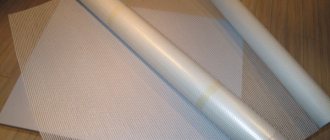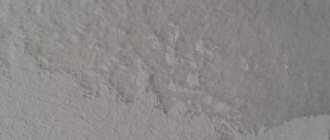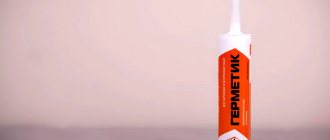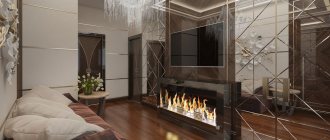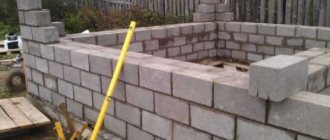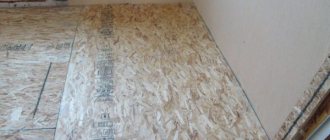March 16, 2021 Flooring and wall materials
During times of total shortage of building materials, there were two types of wallpaper: imported and domestic. Today there is plenty to choose from. In addition to ordinary paper ones, textile, vinyl, liquid, non-woven and even fiberglass-based wallpapers appeared. Due to its properties, fiberglass wallpaper is becoming the main finishing material for walls and ceilings, so it’s time to consider in detail their characteristics, features of selection and application.
Glass wallpaper, isn't it dangerous?
Fiberglass wallpaper is actually made from glass by melting it and stretching it into threads. Then, on weaving looms, they are used to produce fiberglass fabric with the usual geometric patterns - herringbone, diamond, matting, parquet. More complex ornaments are produced on jacquard looms. The resulting fabric is impregnated with a special composition (starch and water) and dried. After quality control, the material is packaged in rolls of 25 or 50 m. All necessary information is indicated on the packaging, instructions for working with the material are printed.
Another type of material based on fiberglass is fiberglass (webs). They are made by pressing chopped fibers mixed with an adhesive solution.
Since the composition of the original product (glass) includes only natural components (sand, clay, soda, limestone), the resulting material is environmentally friendly and natural.
Fiberglass for plasterboard ceiling
The web can also be used to strengthen plasterboard ceiling structures. Experts recommend using it regardless of whether the joints between the sheets were treated with serpyanka or not. It will protect the plasterboard from losing its original shape if the material was stored incorrectly. Pasting plasterboard with cobwebs is carried out according to the standard principle. The only point is that the surface requires preliminary preparation for reinforcement.
Additional materials for finishing the ceiling with plasterboard.
Before the fiberglass is glued to the ceiling, you will need to seal the seams between adjacent sheets, as well as the recesses from the screws, with several layers of putty. After this, the entire ceiling area is covered with adhesive. It will become an alternative to primer and will prevent the absorption of the new layer of composition on which the glass wallpaper will be attached.
Important! Before applying the next layer of glue, you must wait until the previous one has completely dried.
Properties of fiberglass wallpaper
Fiberglass fabric is not only environmentally friendly. It has many other advantages:
- Fiberglass fabric is strong and durable. It does not stretch, it is impossible to tear it. But in the videos of manufacturing companies, the appearance of low-quality fiberglass wallpaper is noted. They are not as elastic and crumble when squeezed.
- Glass wallpaper does not absorb water. This makes them very convenient to care for: they can be washed even with the use of cleaning agents and hard brushes.
- Fiberglass fabric does not burn and prevents the spread of fire.
- The woven base of the wallpaper does not disturb the normal moisture exchange in the room, the walls “breathe”, so mold and mildew do not form on them.
- Fiberglass wallpaper can be painted many times. Combined with durability, this allows you to update the design of the room without re-pasting the wallpaper.
- The structure of the wallpaper and its strength serve as additional reinforcement for the wall decoration.
- Gluing such wallpaper is no more difficult than usual; many people do it themselves.
The disadvantages include the high cost, but if you compare it with the service life, it turns out not so expensive. Manufacturers claim that the wallpaper will last 30 years or more. Increased paint consumption when painting is another disadvantage, but it can be avoided if you pre-prime the surface. The need to take precautions when working with them is a consequence of their fiberglass base.
Video: All about fiberglass wallpaper
Advantages of fiberglass:
- This is one of the most durable wall coverings: it does not scratch, does not tear, is resistant to moisture, their strength qualities are 2-3 times higher than those of vinyl;
- Wallpaper does not attract dust and does not accumulate static electricity;
- Mold or mildew does not grow under them;
- Non-flammable, do not emit toxic substances;
- The gluing technology differs little from the traditional one.
Fiberglass wallpapers are more expensive than non-woven or vinyl counterparts. One of the significant drawbacks is the minimal amount of painting: after 3-4 layers of paint, the texture begins to blur. By the way, only latex or acrylic paint is suitable for this material - it is less dense. And one more thing: glass wallpaper will be difficult to remove from the wall, since they are glued “tightly” as they say.
Types of cullet
Wallpaper based on fiberglass is divided into two main groups according to the production method: woven and pressed. Wallpaper obtained by weaving is a ready-made finishing material. They have a relief structure and a certain ornament, from simple geometric to complex patterns and inscriptions. Fiberglass wallpaper is denser and more durable, painted in different colors.
Another name for pressed glass wallpaper is “spider web” or painting fiberglass. They are looser in appearance and are used for leveling and reinforcing surfaces with subsequent finishing. They are light and smooth, so they are more often used on ceilings than on walls.
Use to strengthen the ceiling
Fiberglass is used as a reinforcing element when additional strengthening of surfaces is necessary.
The fiberglass sticker on the ceiling is carried out in the following order:
- remove the old finish, level, putty and prime the ceiling;
- measure and cut pieces of suitable size from the canvas, leaving a small margin;
- fiberglass is glued to the ceiling end-to-end or at a short distance of the elements from each other;
- smooth the material from the center to the edges with a plastic spatula;
- After the entire surface of the ceiling is covered with cobwebs, its excess edges along the walls are carefully trimmed with a stationery knife.
After 24 hours, the surface will be completely dry, and you can proceed to further finishing.
What's in the package?
Rolls of 1st grade glass wallpaper have a standard width of 1 m. The length of the panel is 25 m (China) or 50 m (Sweden). Rolls are packaged in cellophane and have end caps to protect them from damage. The front label indicates the country of origin and information about the material. Instructions are printed on the inside.
Glass wallpaper of the 2nd grade has any manufacturing defects or non-standard length. The label does not indicate the brand, it is grade 2, and the length of the roll is entered by hand. The roll may consist of several pieces.
Care instructions
Surfaces covered with fiberglass material do not require special care. The web is not electrified, so the finish is resistant to dust and other contaminants. For regular cleaning, you can wipe the coating with a damp cloth without using aggressive detergents. Dry cleaning with a vacuum cleaner is also allowed.
Canvases made from glass threads are primarily intended for reinforcing wall and ceiling surfaces and protecting coatings from cracks. But this is not the only function they perform. Another feature is the leveling of surfaces. Also, many people prefer to leave the structure of the web in its original form and not cover it with putty, but use it as a decorative element.
The large number of different functions that fiberglass performs makes it a real find for those who decide to renovate their home. It not only solves many problems associated with finishing, but also saves money.
How to choose glass wallpaper?
The choice of materials depends on several factors.
- Firstly, there are always personal preferences in color, pattern, texture. Many people like to do repairs with their own hands, so they prefer to purchase glass wallpaper for painting and realize their own ideas about design. Someone who is less demanding of quality is trying to save money and buys second-class wallpaper or chooses a little-known manufacturer.
- Secondly, there is technical feasibility. It is recommended to glue denser and heavier fiberglass wallpaper on the walls, and lighter ones - on the ceiling. When choosing a color and texture, take into account not only your tastes, but also the specific conditions in the room: the size and lighting of the room, its purpose.
- Thirdly, the cost of wallpaper may seem unacceptable to some.
And lastly, the assortment in the store may not be as wide as we would like.
What to choose glass wallpaper or fiberglass - pros and cons
April 14, 2013
Fiberglass is often called smooth glass wallpaper. This is true, because... The main difference between one and the other is the presence of a structural surface. Fiberglass wallpaper, like fiberglass, has the same chemical composition - fibers obtained by sintering quartz sand with auxiliary elements. In addition, both have the same physical parameters - fire resistance, moisture resistance, strength and wear resistance. However, if you dig deeper, you can find other distinctive features.
Differences between fiberglass wallpaper and fiberglass:
- manufacturing method
- surface structure
- application
- density
- price
Firstly, the method of making fiberglass differs from wallpaper. This is primarily due to the possibility of obtaining a structured surface. If in glass wallpaper the threads are intertwined on special looms, then fiberglass is a non-woven material, i.e. the fibers are pressed using completely different equipment. This allows you to get a smooth surface that looks like paper or non-woven fabric.
Secondly, fiberglass has no relief, which gives it an important advantage over glass wallpaper. They can be repainted an unlimited number of times, because the flat surface easily accepts different layers of paint. A textured surface does not respond as flexibly to repeated coating. The fact is that with each layer the structure is simply lost. But in any case, the manufacturer allows up to 25 repaints, which is also not small.
Thirdly, glass wallpaper and fiberglass differ in their scope of application. The former are the final material. It is self-sufficient and only requires painting in the future. Fiberglass can be used as a reinforcing material for walls, as well as as a base for plaster or other wallpaper. In addition, fiberglass will help eliminate the labor-intensive and skill-requiring puttying process, creating a perfectly flat wall surface.
Fourthly, when faced with a choice - glass wallpaper or fiberglass, you should remember that they have different densities - up to 50 grams per meter versus 225. Thus, fiberglass is much lighter, which is important when gluing the ceiling. On the other hand, density affects characteristics such as fire resistance and moisture resistance. Accordingly, the larger it is, the higher the basic parameters.
The fifth difference concerns the preparation of the material. Manufacturers recommend applying a primer to it before gluing fiberglass, which means additional costs, both material and time. Fiberglass does not require such preparation. In this sense, they are self-sufficient and can be applied to the surface only with glue.
Well, the last but most important difference is the issue of price. It is not difficult to guess that fiberglass will cost much less. And this difference is significant - more than twofold. Of course, there are different manufacturers, and the price of a particular material can vary greatly, and the reason for this may be both quality and brand. However, within the same collection, the difference in price will be approximately the same as indicated above.
Regardless of in whose favor the choice is made when planning a room renovation, the coating will look equally aesthetically pleasing and expensive. Everything here will depend on the customer’s priorities. If you plan to frequently change the decor in the room, constantly repaint the walls or apply different coatings, of course, it is better to use a smooth fiberglass coating. But on the other hand, if you want to get a durable, aesthetically expressed surface that will please the eye for several years, it is better to choose glass wallpaper, especially since you can repaint them at any time.
Tags: glass wallpaper, fiberglass
Features of working with glass wallpaper
Video: How to glue glass wallpaper
- Preparatory work. It includes leveling the walls and ceiling. Fill large uneven areas and defects and, after drying, treat with a primer. It is not necessary to bring it to perfect condition. Fiberglass wallpaper will hide minor imperfections. But it’s still better to treat the walls with finishing putty, clean them with sandpaper and prime them again. The better the surface is prepared, the higher the quality of the work.
- Use branded glue, don't skimp. Thanks to quick drying and increased adhesive ability, it reliably holds heavy fiberglass wallpaper. Dry glue is diluted with water; ready-to-use glue can be immediately applied to the walls. In most cases, glue is applied to the surface to be pasted, but there is wallpaper with an applied adhesive layer. They are simply moistened with water.
- After marking (applying a vertical line), the wall is smeared with glue to the width of the roll and a panel cut to size is glued. Smooth with a wide brush or roller, achieving complete adhesion.
- Fiberglass wallpaper is glued end-to-end.
- Panels with a complex pattern have to be selected; make the necessary allowance.
- The reverse side of the wallpaper is marked with a blue or gray stripe. The front one has a more relief pattern.
- Painting begins after complete drying. The packaging indicates a period of at least 12 hours, but it is recommended to wait a couple of days.
- Use water-borne latex-based paint. Paint in several layers using a sprayer or roller.
- Untreated glass wallpaper takes on a lot of paint. Treat them with a special primer.
- If you have to remove old glass wallpaper, use a special removal compound. Cut the wallpaper under the ceiling and pour liquid there. After some time they will come off easily.
Application for decorative finishing
Fiberglass can be painted or coated with other materials only after it has completely dried. If the paint is applied directly to the fiberglass, the web structure will show through the finish. But this technique will give the surface an original look.
To obtain a perfectly flat base, you will need to first level the fiberglass with a layer of putty.
Typically, dry mixtures are used for work, which are stirred in water until the desired consistency is obtained. Apply the composition in a thin layer, not exceeding 1.5-2 mm, using a spatula.
Next, the surface is grouted, but before that you need to make sure that the material is completely dry. The work is carried out with a special grater or grinding machine, where abrasive paper is attached.
Important! If two or more layers of putty are to be applied, each layer must dry well. Moreover, the next layer must be applied to the surface no earlier than 12 hours after applying the previous one.
Tools and materials needed for painting
To work on glass coatings, the following kit is required:
- A primer that levels out the absorbency of the surface and ensures uniform paint application;
- Suitable paint composition and special decorating products (glaze compositions, glazes, effect coatings, pigments, deeply tinted paints for painting, etc.).
- Paint roller with short pile and telescopic handle;
- Materials for decorative design (if necessary): masking tape, textured rollers, dry hard brushes, stencils, natural sponge, soft spatulas, etc.
- The brush is wide and angled on a long holder for painting hard-to-reach places;
- Paint tray;
- Soft cloth or sponge to remove excess paint.
To paint fiberglass, it is undesirable to use spray guns or compressor spray guns, since particles of paint applied under pressure lift the fibers and can damage the integrity of the canvas.
Special clothing and other personal protective equipment are not required, since household paints are usually water-based and have almost no odor. And the surface of the fiberglass practically does not crumble after gluing, and fine dust does not form.
Gluing a cobweb
The described reinforcing sheets are applied according to the same principle. If you are wondering how to glue fiberglass or Dessau web, you should know that the process is divided into several stages.
The first involves applying an adhesive layer to the wall where the mesh is embedded. You can use any of the convenient tools, namely:
· plastic grater;
· rubber or wallpaper scraper;
· simple spatula.
The working part of these devices should not have sharp corners to prevent snagging during the process. Some people make the mistake of gluing the canvas with PVA, and after drying they putty on the base. In this case, the mesh turns out to be useless - its threads will not be able to reinforce the cladding.
